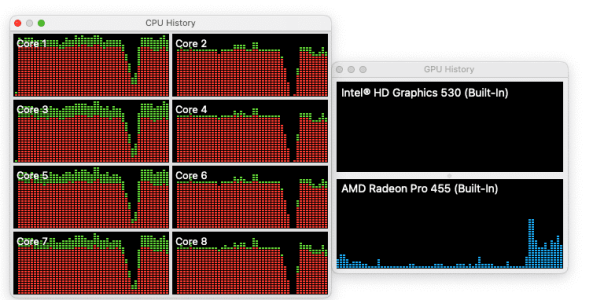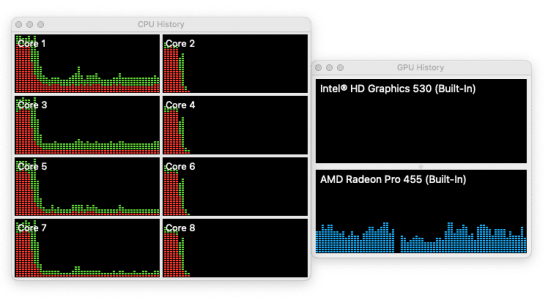@aldous Thank you so much for this explanation. Very helpful! Just curious, would the "pre-load" setting be configured right within the VI's (like Kontakt), or is this something that is a computer setting?
Now on to the issue of slowdowns on my MBP. I did some experimenting last night. Unplugged my largest monitor and the kernel_task went
way down. I’ll spare you all the details, but I then tried out a number of different monitor configurations. The winner seems to be closing the lid of my MBP and using three external displays. Yes, three! Kernel_task stays super low and the overall CPU load (at the bottom of the Activity Monitor) is rock bottom, even with a bunch of apps open. Booyah!
I think I still need to put this setup through its paces - have a
big DP project open, with lots of plugins + VE Pro + other stuff like Safari, mail, and even Dorico. But I’m
very encouraged so far. I’m still going to come up against the limits of my anemic RAM - just 16 gb! Ugh. But this discovery and resulting setup is breathing some new life into my machine. I may just be able to hold on to it for a while longer. Can’t thank you enough for your help!
Re: PCs vs. Mac.
@Robert_G and others who have pointed out the price discrepancies: your argument is certainly compelling, and I’m giving it some thought.
If I wanted an all-in-one setup, it would be hard to continue considering Macs. But I’m actually content to keep what I have (VE Pro + 2 slaves), until those machines aren’t viable any more. At least that’s what I’m thinking right now.
I may try a demo of DP on one of my PC’s just to see how it feels and works. The consensus regarding DP on Windows seems to be mixed -
some users find it miserable, and some are content.
The thought of becoming truly proficient in Cubase - ugh. (Although, Guy Michelmore did exactly that - went from DP to Cubase on Windows, because the cost of a Mac is so high). I would sorely miss DP’s Chunks feature, and the ability to audition highlighted midi and audio (seems like a simple thing, but I’m so dependent on it!). I’m not so much dreading the learning curve as dreading how slow my workflow will be while I learn, and the thought of tight deadlines makes me anxious.
This thread has been very helpful and enlightening.
Thank you all so much for weighing in.
Also, to all, just FYI: it’s
she. 







